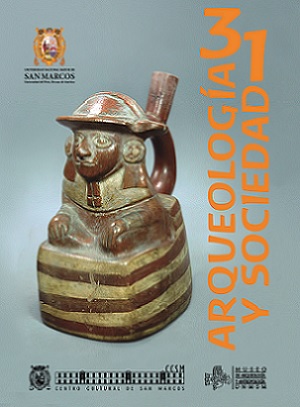QHAPAQ ÑAN ITINERARIO CULTURAL INSCRITO EN LA LISTA DEL PATRIMONIO MUNDIAL, RETOS Y PERSPECTIVAS
DOI:
https://doi.org/10.15381/arqueolsoc.2016n31.e13299Keywords:
Qhapaq Ñan / Andean Road System, World Heritage, Qhapaq Ñan Project, Andean populations, Tourism, participatory management, Huánuco Pampa - Huamachuco SectionAbstract
The inscription of the Qhapaq Ñan - Andean Road System in the World Heritage List is the result of a coordinated effort between six Andean countries: Argentina, Bolivia, Colombia, Chile, Ecuador and Peru. The major events of this process are described, as well as the methodological aspects and criteria that were adopted. Furthermore, the Qhapaq Ñan is characterized on a basis of archaeological and anthropological records, outlining the extent and significance of this prehispanic monument. Then, we discuss the implications of the newly inaugurated and World Heritage-acknowledged phase. Specifically, regarding the case of Peru, we assert to the importance of consolidating a management system of the Qhapaq Ñan, through permanent international coordination which incorporates the active participation of local populations, seeking to maximize social benefits, minimize negative impacts and accomplish the commitments made by the Peruvian State before UNESCO. Finally, we present the case of the Project for the Huánuco Pampa – Huamachuco Section, in order to demonstrate how these proposals are being concretely implemented through different lines of action.Downloads
Published
Issue
Section
License
Copyright (c) 2017 Ricardo Chirinos Portocarrero

This work is licensed under a Creative Commons Attribution-NonCommercial-ShareAlike 4.0 International License.
THE AUTHORS RETAIN THEIR RIGHTS:
a. The authors retain their trademark and patent rights, and also on any process or procedure described in the article.
b. The authors retain the right to share, copy, distribute, perform and publicly communicate the article published in the Arqueología y Sociedad (for example, place it in an institutional repository or publish it in a book), with an acknowledgment of its initial publication in the Arqueología y Sociedad.
c. The authors retain the right to make a subsequent publication of their work, to use the article or any part of it (for example: a compilation of their works, notes for conferences, thesis, or for a book), provided that they indicate the source. of publication (authors of the work, journal, volume, number and date).






